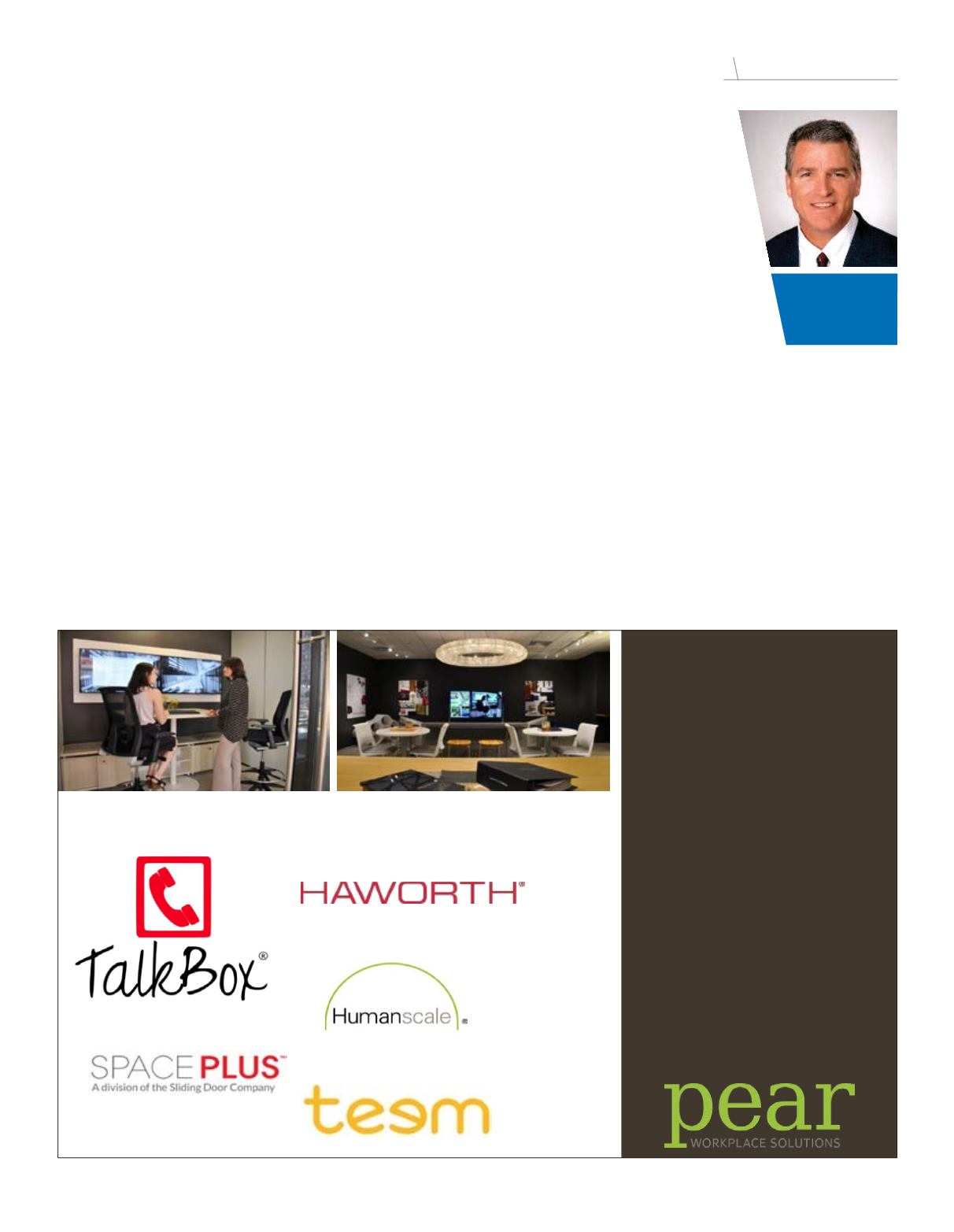

MARCH 2017 \ BUILDING DIALOGUE \
21
lounges and outdoor patios, plus walkable off-site dining
and coffeehouses.
Employees want to work in environments rich in options.
Work now happens as easily in a coffee bar or lobby as in
their space or the lunch roomwithin their space. Employees
want more interaction and they want to be as mobile and
untethered as they can be.
As work today is structured differently, so too is work
space design evolving. There’s a push on the bottom line
to densify, but highly dense and smaller work areas place
greater demand on common areas.
Employers are finally beginning to wake up – the lease
rate is peanuts in the scheme of labor and operating ex-
penses. Talent trumps lease rate in terms of business per-
formance.
JS: What does the future hold for suburban office parks in
order to compete in this amenity-rich expectation?
JN:
Here’s what’s coming: As people enter their 30s and
start families, there’s a migration from high-cost urban liv-
ing to areas that are education-friendly, kid-friendly and
that offer a little more space for growing families. Once you
have a couple of kids, a 1,200-square-foot house doesn’t fit
for families anymore. Families want more for the dollar and
are seeking near-urban or suburban neighborhoods, which
offer more value in real estate. Commute time and transpor-
tation options still remain important to employees.
Development is on fire in the southeast market for several
strong reasons: Light rail is imme-
diately accessible; affordable hous-
ing is nearby; and new housing is
being developed within the SES
market, too. New amenities that are
walkable and within a block have of-
fered new energy for the SES market.
More density is the future and
there’s a very direct correlation be-
tween housing, retail and office.
Office development and housing
feed retail and restaurants – and af-
ter-hours excitement.
The housing helps to populate retail
and restaurants after hours, creating the
neighborhood vibe.
Even the most suburban office parks will require rede-
velopment with new amenities and denser housing to feed
vibe-centered movement.
JS: While newly developed suburban areas may be the modern
nirvana – a mini-urban, walkable neighborhood – is there
anything missing in the suburban settings?
JN:
The piece that’s missing – even Denver doesn’t have as
much of it left anymore – is the unique edge of culture, the
artists, the arts and on-the-fringe culture integrated into the
communities.
The suburban developments are really missing that.
\\
Jim Neenan
President
and COO,
Prime West
OFFICE
INNOVATION
SUMMIT
March 16, 2017
4:00pm – 8:00pm
Pear Showroom
1515 Arapahoe St.
Tower 1, Suite 200
Denver 80202
RSVP to Kaitlin kksteveson@pearwork.comParticipating Sponsors:
Leading the Way
















